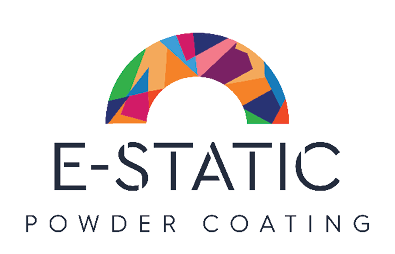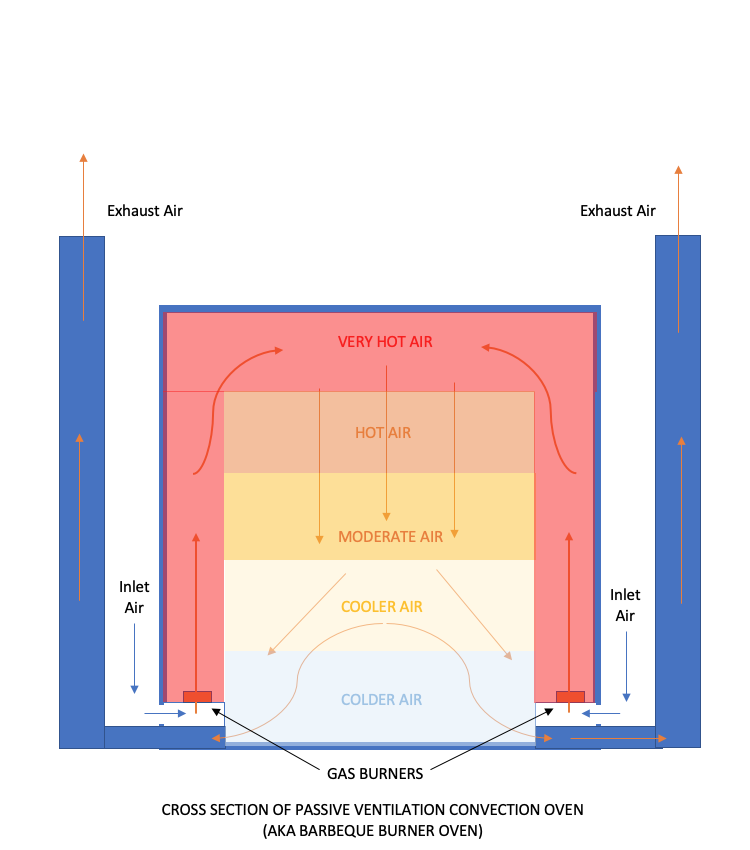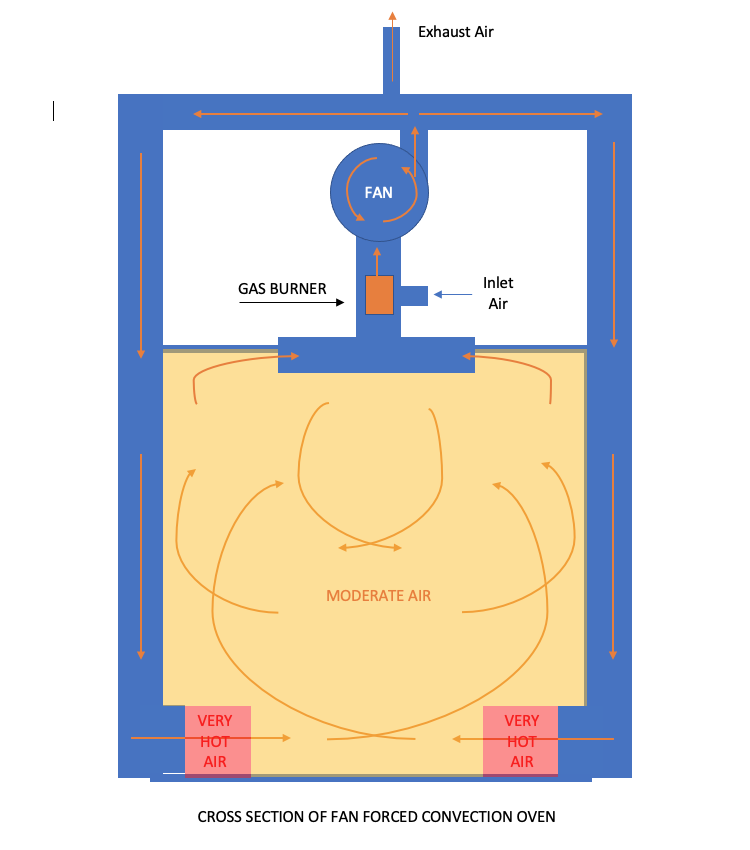The importance of oven design in powder coat curing: Fan-Forced vs Barbeque Burner ovens
Just like baking a cake, using a good oven in powder coating can be the difference between a good, durable coating and an undercooked flop (or a burnt, overcooked mess!).
Although most people don’t think about it a lot, having a consistent, controlled temperature within the powder coat oven is vital to ensure all items are sufficiently cured and not exposed to excess temperatures. Thermoset powder coat finishes that have not been cured sufficiently exhibit poor adhesion and low coating strength (flake and chip VERY easily). Alternatively exposing powder coat to higher than recommended curing temperatures / durations (over-bake) can result in discolouration or degradation of the coating.
As in any industry, the type of equipment you can get to complete a process presents trade-offs in cost vs. performance. Within the Australian powder coating industry, two types of gas fired convection ovens tend to represent a large majority of installations.
The cheap and simple model is a passively circulated convection oven which uses gas burners that are similar in design to that fitted in a standard gas fired barbeque (aka. barbeque burner oven). Circulation of hot air within one of these ovens is passive; that is the movement of air within the oven only occurs due to natural convection currents (hot air rises / cold air falls) created by the position of burners, exhaust outlets and parts in the oven. Subsequently this oven design is prone to temperature stratification (high temperatures at top, low temperatures at bottom of oven) and hot/cold zones due to the limited movement and turnover of air within the oven space and around parts being cured.
Conversely a fan-forced convection oven, being more complex and costly to construct, uses pressure generated from a fan to drive air movement around the oven space and the parts being cured within it. Furthermore it continuously turns over or circulates the volume of hot air within the oven; extracting hotter air that tends to collect in the top of an oven, mixing it with the hot air from the burner and forcing it in at the bottom of the oven to heat up / mix with the cooler air that tends to collect near the floor of a convection oven. This design results in a more turbulent mix of air within the space, ultimately resulting in a more even dispersion of temperature across all surfaces of parts in the oven.
Here at E-static Powder Coating we exclusively use only indirect gas fired, fan-forced convection ovens and have done so for 20 years now. We have temperature data loggers which we can use to monitor product metal temperatures within our oven and also have chemicals on hand to confirm correct cure of powder coat on finished products.
In 2002 we literally sent a barbeque burner oven we had to the rubbish dump because of the difficulty in achieving thorough curing of all parts in a passive ventilation convection oven and the negative effects this has on finished coating performance for our customers.
So next time you visit your powder coating supplier, ask a little bit about the design of their oven - especially if you’re experiencing powder coating that chips or flakes very easily or are seeing some yellowing or discolouration of white / light coloured finishes. We don’t have those problems here at E-static Powder Coating because we use the right equipment for the job!


